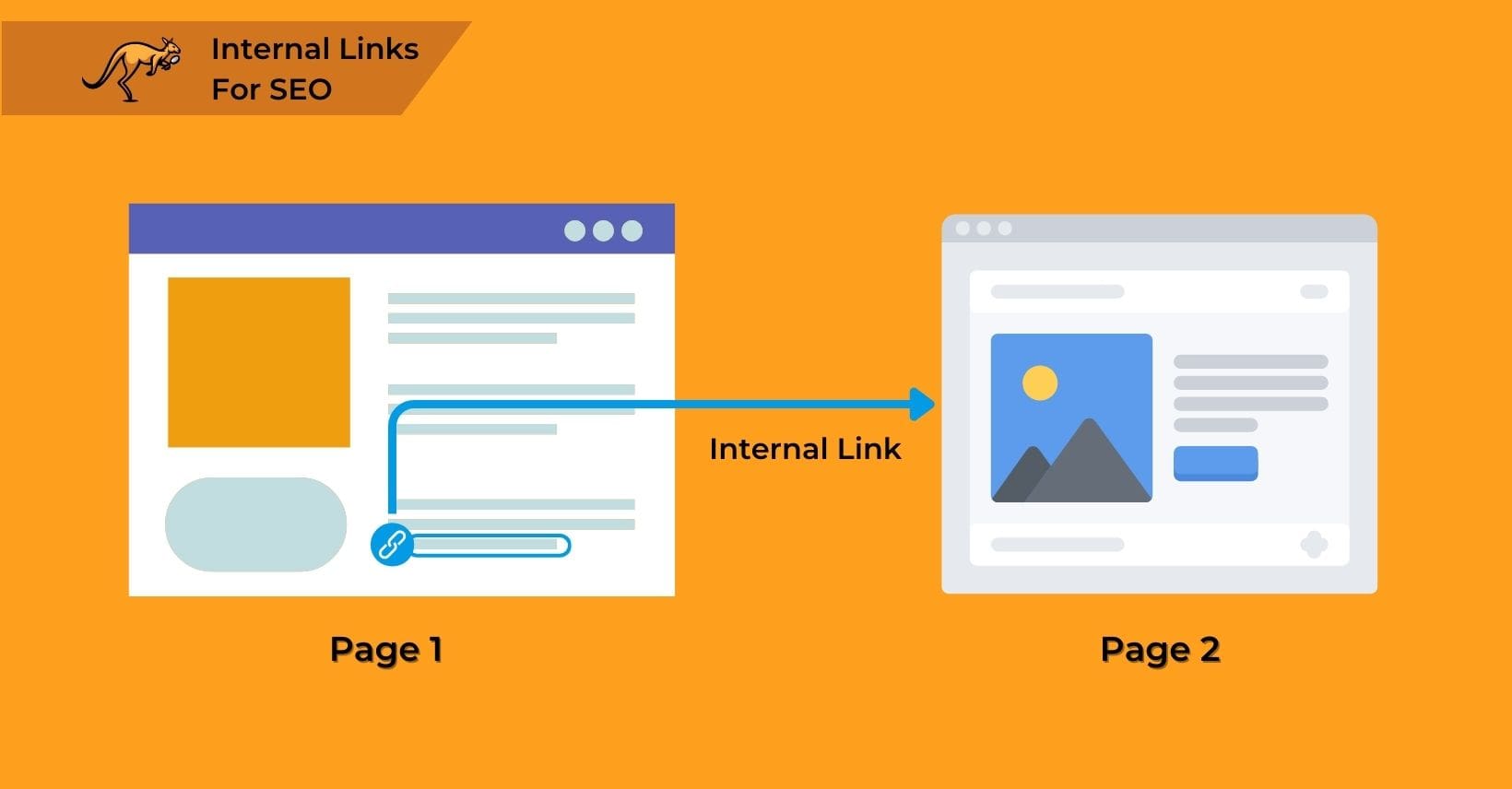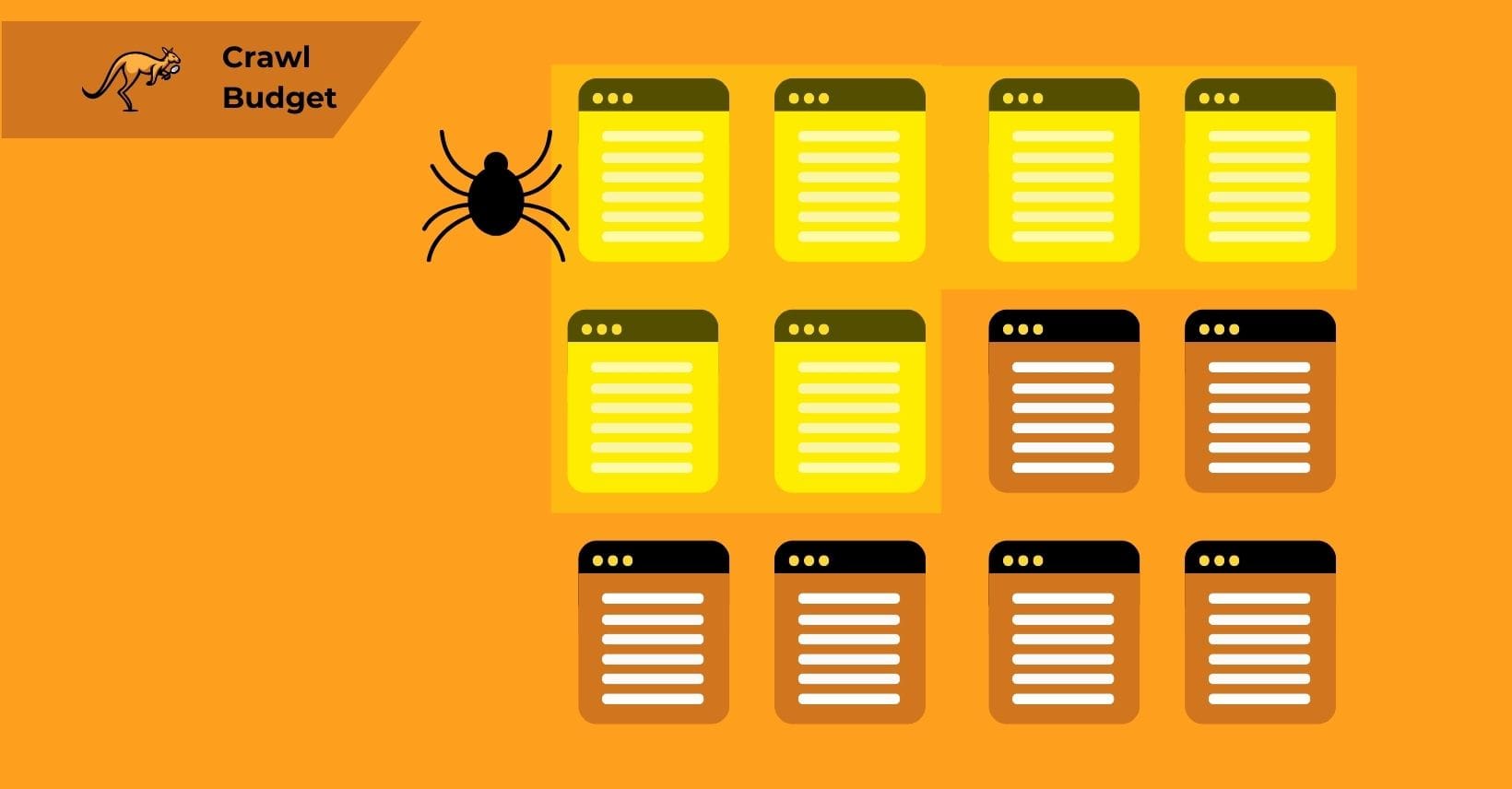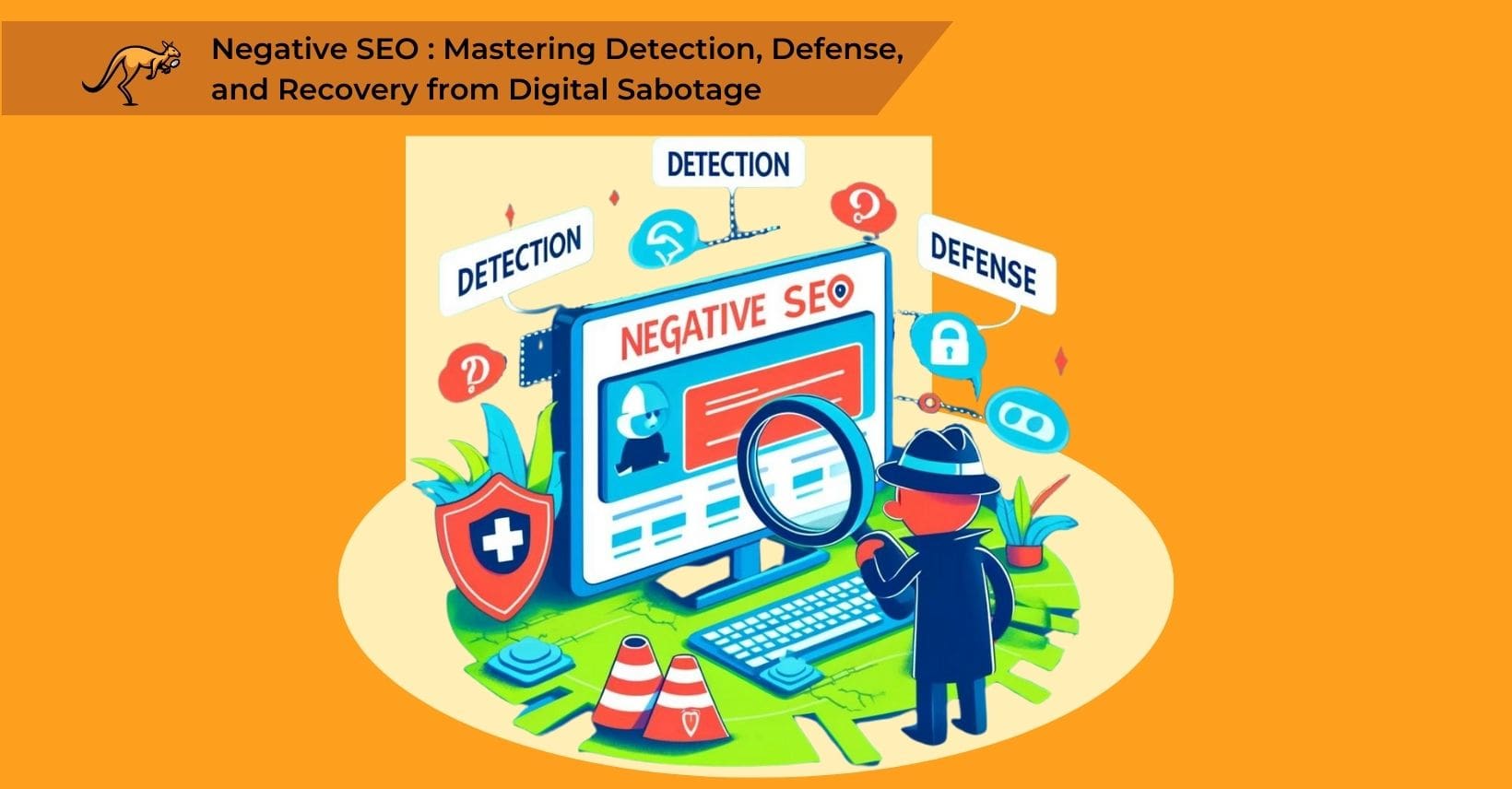SEO involves many techniques, but often, people focus only on the well-known ones.
A major one is external links and link building, which boosts page equity and improves page rankings.
However, the popularity of external links often overshadows internal links, which can be crucial in the long run.
Internal links may seem less exciting, but they offer numerous SEO benefits and help Google rank your site higher.
While the exact workings of Google’s SEO algorithm are unknown, effective internal linking has proven vital for improving search engine results.
So, how do internal links benefit SEO, and what sets them apart from external links in Google’s ranking system?
Let’s explore what are internal links and their importance in enhancing your site’s SEO.
What are Internal Links

Internal links, as the name suggests, are links that connect different pages within the same website.
Unlike external links from another domain, internal links stay within your domain. For instance, these links might appear as product page links in a blog post or navigational links in the top navigation bar, guiding users to various parts of your site.
Internal links come in four main types, each serving a distinct purpose:
- Navigational links: These links are primarily for navigation. A navigation bar is a collection of these, helping users move around the site efficiently.
- Sidebar links: Similar to navigational links, these point to relevant pages but are in the sidebar. Examples include links to related blog posts or specific product categories.
- Footer links: Found in the page footer, these links often lead to important pages like Terms & Conditions or FAQs.
- Contextual links: Used within the content, these links connect to other relevant pages. For example, a blog post might link to related articles or projects mentioned in the text.
These links enhance user experience by making the site easy to explore and improve SEO by helping search engines understand the site structure. Now, you might wonder about their impact on your site’s effectiveness.
Are Internal Links Important for Sites?
Creating internal links is easier than creating external links because you control both the source and destination pages.
Internal links are crucial for navigation; without them, users can’t easily move to other pages. But internal links do more than aid navigation.
Effective internal linking boosts SEO, helping your site rank higher for various search engine keywords and adding value to individual pages.
This opens the door to understanding how they enhance your site’s overall SEO strategy.
How Do Internal Links Boost SEO?
Google manages SEO and rankings through links, context, and relevance.
Search engine crawlers, the bots that scan sites, must follow the site’s architecture to find pages to index. When a page is indexed, it can appear in search results.
Crawlers can only index a limited number of pages at once. They must be able to access the pages on your site to be indexed and visible in search traffic.
Contextual links relevant to the source and target pages help search engines understand each page’s purpose.
These are the benefits you can get true effective internal links:
Internal Linking Helps Crawlers
If crawlers cannot find certain pages on your site, then those pages will never appear in search results. Search engines can only list pages they can find and index, making internal linking invaluable for this exact reason.
While search crawlers will always start on landing pages (usually the main page of your site), they can only find other pages to index by following the site structure you created.
This means they follow links exclusively, hunting for new pages by using every internal link to map your website and identify how pages should be indexed and ranked.
This means that a good, well-thought-out internal link structure can directly contribute to getting more pages indexed faster or even getting certain pages indexed.
Suppose an important page is only accessible through ads or links on another site. In that case, Google will not necessarily be able to find it.
Internal Linking Carries Context
Google also notices contextual links and considers context and anchor text. Anchor text is the actual text that the link is attached to and tells users (and crawlers) what kind of page they are going to.
A page does not need to have exact match anchor text compared to its page title or header, but it should be contextually relevant.
Suppose a user clicks on a link with anchor text about a top-10 list of furniture brands. In that case, they want to go to relevant content – in this example, an article about that exact topic.
Since Google prioritizes helpful and reliable sites as often as possible, having bad anchor text on internal links can hurt your ranking chances.
Crawlers will notice if an internal link pointing to a product page has anchor text about something irrelevant, like customer support or tutorial articles.In basic terms, the better your anchor text is, the easier Google understands your site and the higher it is willing to value that link.
Ideally, anchor text should make sense entirely on its own – it should not be written in a way that requires the surrounding text to understand.
Internal Linking Prevents Dead Ends

Google can’t follow all links. Some might exist in JavaScript code or something else the crawlers can’t see, which could theoretically create dead ends if there are no other links on that page.
Having at least one or two constant internal links on every page makes it easier for users and crawlers to avoid getting stuck in places where they can only escape by using the back button.
It sometimes also helps to have regular text-based internal links as a backup, just in case that site feature breaks or a user’s browser cannot display that custom element.
While this might not matter as much for SEO, it does sometimes help crawlers continue sweeping through your site rather than getting stuck.
If a crawler gets stuck somewhere with no more links to follow, it might simply give up and stop crawling your site. This can cut things short before it has even indexed most of your website.
Internal Links Prevent Missed Content
Google uses links, context, and relevance for SEO and rankings checks. Search engine crawlers, the bots that explore websites, follow the site architecture to find and index pages. Indexed pages can then appear in search results.
However, crawlers can index only a limited number of pages at once. They must be able to reach them for indexing and visibility in search traffic. Contextual links relevant to the source and target pages help search engines understand each page’s purpose and connections.
When considering internal links, it’s important to consider link equity and how it can benefit your site.
Internal Links and Link Equity
Internal links offer significant benefits by providing equity, a measure of link value to search engines. SEO professionals recognize that externally earned links transfer equity between sites.
However, internal links also transfer equity between pages on the same site, strengthening internal pages as ranking options. Most internal links transfer small amounts of equity effectively, boosting the SEO value of the entire site structure.
This transfer of equity within a site leads us to a crucial concept in SEO strategy. Understanding the nuances of link equity can further enhance your approach.
What is Link Equity?
Link equity, or “link juice,” measures a page’s authority. It serves as a general metric of how “powerful” your site would be in terms of ranking, even though equity is not a measurement created or used by Google.
Link juice is shorthand for how much SEO value a specific page offers.
It can be transferred through links, which forms the basis of link building: being linked to other sites gives the linked page greater equity, meaning stronger SEO rankings for its relevant topics.
Internal links can also pass equity along. This means that internal links can distribute equity across your site. You are funneling more authority towards important pages even if they do not have many direct external incoming links.
How Do Internal Links Help with Equity?
Internal links can’t generate equity and authority from nowhere, but they can spread it around.
Internal links from high-authority pages to low-authority ones help the lower-equity page gain a little more.
Doing this means boosting the equity of multiple site pages through carefully placed internal links.
Strategically adding internal links that funnel equity towards important pages can make a huge difference, especially if they are “pillar pages” meant as high-authority content supporting a range of other articles and pages.
However, the same factors apply to the success of internal links here, too. You want to add internal links that point to and from relevant content and have descriptive anchor text that fits with the destination page.
Why Does This Matter?
This strategy turns internal links into a powerful way to push your most important pages higher in search rankings. This can give noticeable boosts to major product pages, promotional landing pages, or any page that needs to rank well to succeed.
Additionally, this adds many internal links to the same page throughout your site, making users more likely to end up there while browsing. By understanding this, we can move on to how to create effective internal links, which will further enhance your site’s structure and user experience.
How to Build Good Internal Links
Internal links can be complex, just like external ones. You can’t simply place internal links pointing to random pages and consider the job done. It takes effort to create internal links that work well.
Finding and effectively using good internal linking opportunities is key to your site’s successful internal linking strategy. There is no one-size-fits-all approach to internal linking; you must develop a strategy that suits your specific domain, especially if you operate in a small niche or focus on particular content types.
As you refine your internal linking, you might wonder about the next step in boosting your site’s performance.
Here are some steps you can take to build effective internal links
Create Good Content
Solid content with a clear structure is the best way to strengthen your links.
The most popular technique is “pillar content,” where you create major central content that covers a broad subject and links to more specific articles for different subtopics.
Pillar pages are meant to be quite a flexible idea and can work with basically any content niche.
While pillar content is not the only example of a good content strategy, it allows you to capture a range of audiences and have many articles that link to one another through relevant keywords and contexts.
Remember that Google values helpful, well-structured, and relevant content first and foremost. Create good content with actual value, and use that as the basis of your site structure.
You can also go back and tweak older content if you need to. If a piece of content is not doing its job, try changing how it is written or even the keywords it targets and the audience it is trying to reach. Sometimes, you will stumble across a winning combination by pure accident.
Understand Internal Linking in SEO
SEO—specifically, building links—can be daunting to learn at first. Thankfully, internal links are generally quite easy.
However, suppose you do not already know them. In that case, it is important to understand SEO basics, such as choosing the right internal link anchor text and where to add links for maximum relevance.
A solid internal linking strategy demands more than focusing on the number of internal links you gather. You want to understand how to boost link and page quality overall, whether that means technical SEO or larger-scale link-builder techniques.
You should know at least the basics of how links work in SEO and familiarize yourself with tools like Google Search Console if you haven’t already.
Understanding the basics of contextual internal links can be important if you are trying to create high-quality links from scratch instead of simply spamming links on one page and hoping they work.
Know What Makes an Internal Link High-Quality
Internal link quality is more important than how many internal links you have pointing at your site. But what does “quality” actually mean in the context of a link?
A good-quality link generally comes from three core factors: being highly relevant to the linking and linked content, coming from sites with high authority, and making sense of your website structure.
Relevance
Relevance focuses on how relevant the link is to the content and its target content.
You want links to match up naturally, including internal links.
Suppose you add internal links completely mismatched with the content they are placed in or do not relate to the linked page. In that case, search engines may penalize them instead of using them as a ranking factor.
The “link juice” that boosts pages only transfers if Google allows it, and it is common for irrelevant links to get completely blocked if they are unrelated.
You can’t just slam any links you want into an article or other site page. You need to construct something that feels organic and connects the sending and receiving pages.
High Authority
As mentioned earlier, authority ranks based on how much value search engines assign to a page.
While authority comprises a range of other factors, and not all of those factors will be judged by all search engines in the same way, a page with higher authority generally ranks more often.
Authority can come from many sources, from creating good, high-quality content to building backlinks that point to equity and authority from other sites back at your own.
Either way, internal links have the biggest impact if you connect a high-authority page to a low-authority one. These create important internal links that transfer authority to the most needed pages.
While you do not want to focus on this exclusively (since internal links are also used for navigation and benefit SEO in general), finding ways to link these high-authority pages to your intended ranking pages can give them a noticeable boost.
Structural Link Layout
A strong internal linking structure is vital for spreading authority throughout the site. A site with many higher-authority pages will rank better than just one high-authority main page.
Not only do good structural links improve user experience (since they can navigate your site), but they also provide better SEO benefits overall.
Beyond that, it ensures that crawlers can easily search the entire site without getting caught in dead ends or loops and that the incoming internal links can transfer more equity.
There is no point in trying to build fantastic internal links if you are not placing them in a usable way. While all pages may be on the same root domain, users (and crawlers) will not find them if no links point to them.
Adding more links to build a clear, tiered website structure is the best option. You want your internal linking to make sense and always direct customers where they want to be.
Find Good Keywords and Anchor Text
Keywords can matter with incoming internal links just as much as with external ones. When a user clicks on a link, the anchor text should match the content they are going to.
This is not just a convenience factor for human users. It also helps crawlers understand your site’s layout and can boost the power of a link if it uses an incredibly relevant anchor phrase.
Your anchor text should ideally be keywords relevant to both the linking and linked page, and you should avoid using the same anchor text for two pages whenever possible.
When the entire domain has excellent internal links with unique anchor texts and destinations, Google finds it easiest to crawl a site.
Even if you only focus on links within the same website, having two links with identical anchors can confuse crawlers. You may even lead to both pages being ranked lower overall.
Perform an Internal Link Audit
Reviewing each incoming internal link on your site is a good idea for understanding the overall structure.
Suppose you already have many internal links (which most sites will, unless they have a single page). In that case, checking and seeing what already exists is important.
This prevents you from linking to internal pages that are linked in the same way or accidentally creating duplicate links pointing to one page.
Ensure you have a solid overview of the many internal links already on your site.
Tweak Existing Links
Getting the right internal linking strategy sometimes means tweaking links rather than just adding links.
If your most important internal links have already been made, see if they can be improved. Part of internal linking for SEO is knowing when to optimize what already exists.
Not all existing internal links pointing at major pages will be perfect, and sometimes, it is better to optimize them rather than add links that would supplement or replace them.
Fix Broken Links
Broken internal links are quite common after you change the site.
Broken links are any link that used to point to a valid page but now does not. This could be because the page was deleted or because the URL of that target page was changed.
Broken internal links transfer no equity, annoy users who try to rely on them for navigation, and can weaken your internal linking quality if Google notices.
You want to avoid broken links pointing at non-existent pages as often as possible. Thankfully, various tools can automatically scan for broken site links, making identifying and fixing or removing them easy.
Fix Orphaned Pages
Orphaned pages are any pages that get no links from elsewhere on your site.
These may have previously been linked to, only for their original links to be deleted. This can mean that they rank on search engines but are not in your website structure.
If possible, always create internal links pointing to your orphaned pages. This ensures they are included in your site’s indexing whenever a crawler checks it.
Create a Sitemap
A sitemap file tells Google which pages are important to your site. It provides details about specific files hosted on the website.
This makes crawling more efficient since it tells Google how many links exist within your main site structure.
Sitemaps are just a recommendation to the algorithm and do not lead to guaranteed change. Still, they can help push the right pages into search results faster.
Avoid The Wrong Types of Internal Links
There are two types of internal links: nofollow and dofollow internal links.
Nofollow links do not transfer equity or value; crawlers avoid them, meaning your internal linking score will not change.
This can be good for links to technical pages behind the scenes or smaller resources on your site but not for links that need to appear in search results.
Dofollow links are standard links that transfer equity but also impact your rankings—whether that impact is positive or negative.
While these are more prominent with external links from other websites, they can also influence the internal links you create. Nofollow links are not bad but are just another tool that needs to be used carefully.
Place Links Intelligently And in Accessible Places
Sidebar links and footer links are often reserved for specific uses, and users expect that.
While Google’s crawlers are not humans, they also want your website structure to make sense and like it when the links fit with what most sites would naturally do.
It can be fun to try and be “quirky” by placing your important links in special JavaScript menus or having a main page chain that requires you to follow multiple links before hitting the real navigation menus but always has some kind of backup.
If a user or crawler cannot find the links or are not visible to them in the first place, the links may as well not exist.
Use The Right Tools
The right software, from Google Search Console to various keyword research tools, is important when managing your links.
Even producing a links report based on your site’s structure can provide many benefits; unusually, it only takes a few clicks.
Like any project, you want to use the right tools to manage your internal links. You never know when one might speed up an incredibly difficult step of the process.
Don’t Be Afraid to Remove Internal and External Links
Sometimes, a link just isn’t worth keeping. While aiming for fewer links might seem counterproductive, not all links are beneficial. If a link, whether internal or external, harms your SEO, removing it could improve your site’s health in the long run.
Alternatively, you can set it up so search engines never crawl that link or direct it to a more suitable target page. This brings us to how link-building agencies can improve your internal link structure, ensuring each link adds value to your site.
How Link Building Agencies Enhance Your Internal Link Structure
Link-building agencies improve your site’s internal link structure by boosting navigation, user experience, and search engine ranking. They start with a site audit to understand the current link framework and spot areas for improvement.
Based on this audit, they create a strategic plan tailored to your site’s needs, focusing on a logical, hierarchical structure that guides users through your content smoothly. Content mapping is another key step: agencies find the best places to insert internal links within your content.
These links are contextually relevant, adding value to the reader and increasing the authority and relevance of the linked pages.
Agencies then implement these links naturally within your content, providing a seamless user experience.
Internal linking requires ongoing optimization, and agencies continuously monitor the performance of your internal links, making necessary adjustments to keep your site optimized and aligned with the latest SEO best practices.
This continuous effort keeps your internal link structure effective in driving traffic and improving your site’s performance.
Choosing a reliable partner is essential to achieving the best results in your internal link strategy. That’s why Searcharoo is the top choice for this task.
Why Searcharoo is the Best Choice for Your Internal Link Strategy
Choosing Searcharoo for your internal link strategy brings several benefits. Our team, consisting of experienced SEO experts, focuses on creating effective internal linking strategies. These strategies enhance user engagement and boost search engine rankings.
We recognize that each website is unique, so we develop customized plans that align with your site’s goals and content. Our services include site audits, content analysis, and ongoing optimization to ensure your internal linking strategy integrates seamlessly with other SEO efforts.
Our proven track record shows measurable improvements, with clients experiencing increased traffic, better user retention, and higher search engine rankings. We are committed to client satisfaction, providing dedicated support to address questions or concerns.
By choosing Searcharoo, you invest in a comprehensive SEO strategy that enhances your internal link structure and drives long-term success.
Internal Links Are Very Important
Whether you run a small online business or a major information and editorial website, internal links are practically the core of your site’s structure.
However, they can also be invaluable for boosting your SEO and getting noticed in search results, which every site should be chasing.
While the topics discussed here are just the tip of the iceberg, how you approach your linking structure is up to you. No two sites will use the same techniques and linking options, so you must determine which option works best.


